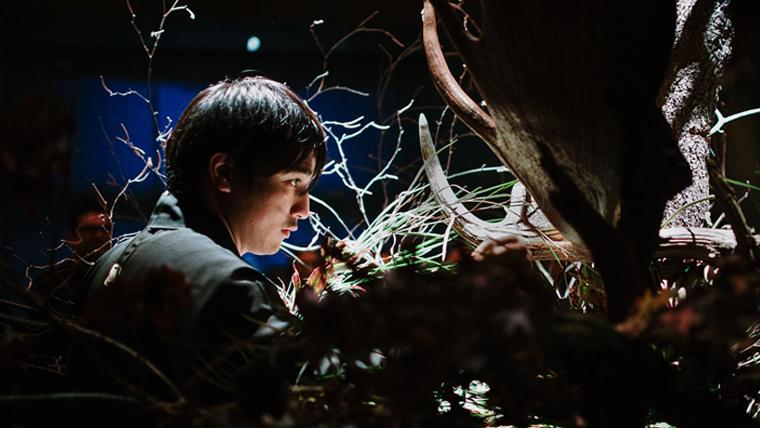
This ikebana artist is sculpting connection to the natural world
Life blooms and boasts with abundant intricacy. Encountering the natural world is that moment of awe, silence, and contentment. To ikebana artist Yuki Tsuji, nature is his all-consuming muse. Through the Japanese art form of flower arrangement, he’s enhancing its beauty and complexities. “I believe that reverence is the essence of what we learn from living things,” Tsuji says.
Ikebana uses living flowers to showcase the different facets of nature. The art form was introduced in Japan in the sixth century, and its roots can be traced back to Chinese and Korean Buddhism and Shinto. Tsuji studied architecture before mastering ikebana, and his work displays the interconnectedness of people, design, and plants. One of the principles of ikebana is preserving space rather than filling it. Stitching together fragments of plants, branches, and stems, the result of Tsuji’s work is more than an aesthetically pleasing arrangement, but a feeling of the presence of nature.
Tsuji maintains that the natural world is intrinsically a part of us. The common adage to ‘get in touch with nature’ has a direct link to reduced levels of stress and anxiety. As ikebana evolved, it became associated with its meditative and spiritual qualities as artists practise minimalism and balance.
“The essence of ikebana is to create a sculpture of life by finding infinite beauty in each of the various materials we use,” Tsuji says. His work is a visceral expression and reminder of our interconnected relationship with the natural world. Through ikebana, Tsuji reflects the depth of nature in all its seasons, struggles, and triumphs.






























Please sign in to leave a comment